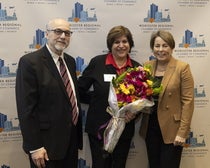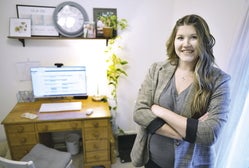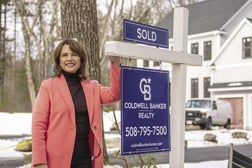Worcester: an urban alternative to Boston?
In a competitive commercial real estate market, Worcester is marketing itself as a true urban alternative to other Massachusetts locations while continuing to play up its developer-friendly status as city officials look to pull in companies from within and outside the state.
“Worcester offers the opportunity to be in an urban center, and offers the amenities you wouldn't be able to find along a highway exit,” said Tim McGourthy, executive director of the Worcester Regional Research Bureau. “Worcester has to prove itself as a viable urban alternative … there are a lot of places that are 'other than Boston' but there are not a lot of places that are viable urban alternatives.”
The commercial real estate numbers have always been in the city's favor. Office space in Worcester rents for $20 to $25 per square foot on average, compared to up to $65 for a comparable space in Cambridge, said Michael Traynor, the city's chief development officer.
And the market is only getting tighter, according to William Bailey, a managing director with commercial property broker JLL, in Boston.
As the Boston market continues to tighten, surrounding areas such as Worcester will begin to become increasingly viable alternatives. The market has not tightened to the point where it's driving companies out here, but that could happen within the next two years, Bailey said.
“There is still adequate supply in the market. As long as that exists, tenants will be able to find a solution (around Boston),” Bailey said.
Schools and startups
However, Worcester is positioning itself for just that and playing up what officials see as its strengths, which include its urban core and colleges. The city is not just looking to pull companies from Boston, but draw them from beyond and encouraging startups to locate here, said Sherri Pitcher, director of business recruitment at the Worcester Regional Chamber of Commerce (WRCC). In many cases, Worcester will compete with smaller cities such as Waltham and Providence that offer a “city feel,” McGourthy said.
“The key is creating connectivity and creating that urban core and vitality in the way that they will choose it as an alternative to Boston,” he said. “Worcester has to be a vibrant, urban center to be successful, otherwise businesses will find lower-cost, easier-located spots around the region and they won't need Worcester.”
Traynor, who replaced McGourthy when he left for the research bureau, said the city's focus extends to creating an exciting, 18-hour-a-day downtown to create a space people want to live and go out in as well as work.
“You need the vibrant downtown that sets the stage for development anywhere else in the city,” Traynor said. “You've got to have that strong core.”
Private developers have launched improvement efforts on their downtown properties as the city upgrades the area around City Hall and CitySquare. A recent call for developers of the former courthouse building in Lincoln Square on Main Street received four responses, all of which included some form of housing, Traynor said, which would help the need for continued growth downtown.
Gilbert Winn, managing principal of WinnDevelopment, which recently opened the Voke Lofts in the former Worcester Technical High School, said there's room for upscale development in the city. For example, he said all 84 units at the Voke Lofts, where rents can reach $2,000 a month, are full, less than six months after the building opened.
“The simple chronological order is you build housing and then the retails and businesses follow,” then people begin to want to live and work in the same area, meaning that “businesses have to be there,” he said. “It really starts with housing. You are never going to attract major businesses without it.”
Going where the help is
Access to prime employees is a huge factor in keeping businesses in the Boston area, Bailey said. Relocating outside Boston could save on rent, but the company will not make the move if it will lose key employees or geographical access to potential employees.
“You now have to find a balance between savings in rent to loss of key employees and being able to retain employees,” he said.
Keeping the college students in Worcester would provide those prime employees, said McGourthy, whose organization recently explored that issue in a forum and report. The city graduates 7,500 college students every year, but has historically had a difficult time retaining them, he said.
That's part of the reason Winn sees more opportunities here.
“We are looking at expanding our development presence,” he said. “We believe there is a need for more market-rate housing and a need for more student housing and there is a need for institutions to expand.” He's looking at Union Station, Gateway Park and the downtown core as potential sites for his next project. Those locales have underutilized buildings with classic architecture that provide a solid foundation for a renovation, he said.
So while there continue to be multiple factors that must come together to help pull businesses into Worcester, the fundamental framework is being built, officials said. The city has long been described as “up and coming,” but it is now that many of the plans — such as CitySquare and Lincoln Square — are coming to fruition, said Traynor. And, he added, a steady number of developers has begun to look at properties in the city.
“Now we have things that have started or are about to begin,” he said. “The momentum has certainly picked up and ideas have turned into hard and fast accomplishments.”













0 Comments